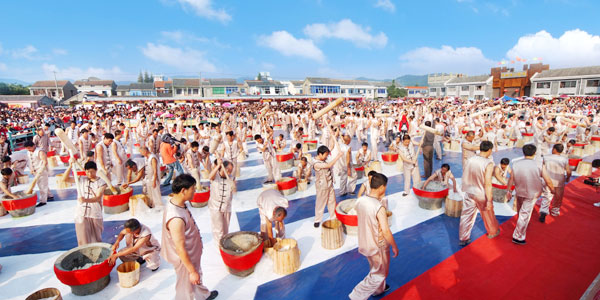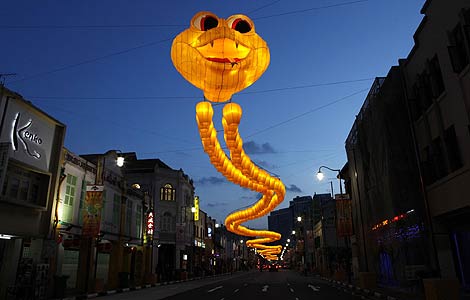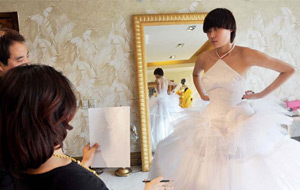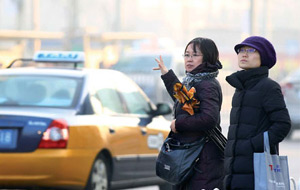Traditional treat
Updated: 2013-02-13 10:19
By Wu Yiyao (China Daily)
|
||||||||
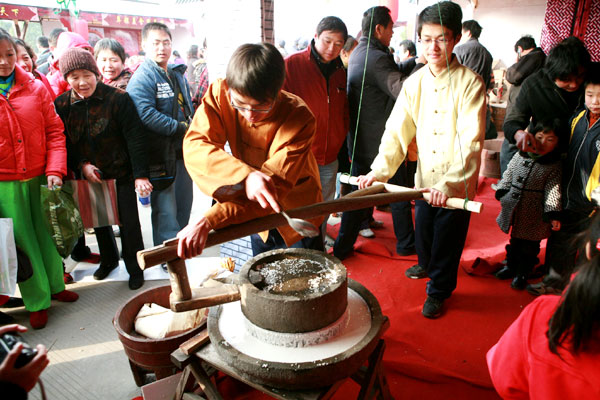 |
|
Water-soaked rice is milled into a milky paste that flows into a cotton-cloth bag, in the first step in making rice cake. Provided to China Daily |
With a history of 2,000 years, rice cakes bring both palatable and visual pleasures, Wu Yiyao reports.
Surely few staple foods are as versatile as nian'gao, or rice cake, a must-have during Spring Festival in East China.
From appetizer to soup, from main dish to dessert, sticky and chewy white rice cake offers delectable celebratory diversity thanks to its amenability to any shape of mold.
However, Zhang Jianchang, head of Ningbo Grand Bridge Ecological Farm in Zhejiang province, one of the largest farms with a rice cake mill, says each step of making rice cake brings about multi-facet beauty of the delicacy.
"A well-preserved rice cake may last hundreds of days; the best time to taste it, however, is always straight from the steamer, before it is shaped," said Zhang.
Ningbo, a coastal city, is considered the birthplace and one of the best places for rice cake. Archaeologists have found the cultivation of round-grained rice, the key ingredient for rice cake, has a history of more than 5,000 years in Ningbo, and historical accounts trace rice cake in the area back 2,000 years.
Ningbo rice cake comes in a mind-boggling variety of sizes, shapes and colors.
The color is important, as rice cake is often eaten on festive occasions. Rice cake is usually white when cooked in soups on the lunar calendar's New Year's Day, which is considered a day with a lot of yangqi, as white symbolizes positive energy associated with such qualities as brightness and warmth.
But on some occasions, you will come across rice cake in another color, such as red.
Red is believed to be an effective means of scaring away nian, a legendary beast that comes out at the end of a year to eat people, preferably children. Rice cakes with red stamps were regarded as a powerful talisman against the nian and other goblins and malignant spirits, and stewed with red beans and other sweet ingredients, a bowl of rice cakes helped people endure the winters.
Slices of rice cake are also used as bricks in tabletop towers, which people believe bring peace and good luck when eaten. Many families eat rice cake in the shape of a fish dyed like a rainbow with edible colors in the hope that the rice cakes will bring a "good catch" in the coming year.
Cicheng has a museum that displays the tools and manufacturing processes used to make rice cake, which is the only museum of its kind in East China.
"Rice cake is deeply ingrained in day-to-day activities of Ningbo people all around the world, and the museum is a nice place to share the feelings of this group," said Wang Hui, a guide at the museum.
